Foot Protection
Designed to keep your feet dry and protected in wet environments, Liberty Safety offers DuraWear foot protection in six boot styles that are slip-resistant and made to last. These boots provide flexibility and comfort while the materials are waterproof and durable. Foot health is often an afterthought. However, the well-being of your feet can make a big difference in your productivity. That’s why we know that choosing the proper foot protection makes all the difference.
Designed to keep your feet dry and protected in wet environments, Liberty Safety offers DuraWear foot protection in six boot styles that are slip-resistant and made to last. These boots provide flexibility and comfort while the materials are waterproof and durable.
Foot health is often an afterthought. However, the well-being of your feet can make a big difference in your productivity. That’s why we know that choosing the proper foot protection makes all the difference.
Showing all 9 results
-
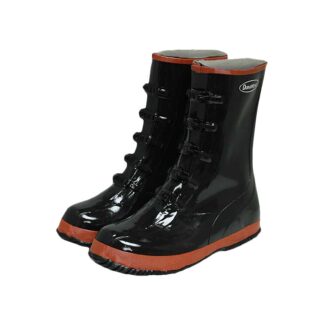 1520
1520DuraWear™
5-Buckle Arctic Rubber Boots
-
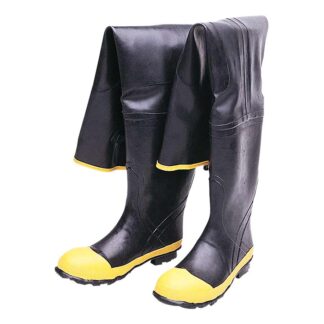 1531
1531DuraWear™
Black Hip Wader With Steel Safety Toe
-
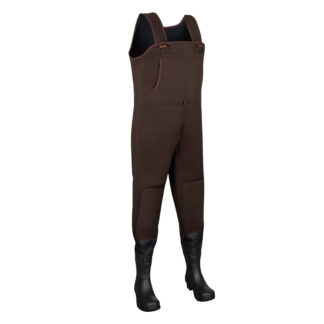 1532
1532DuraWear™
Neoprene Chest Wader with Boots
-
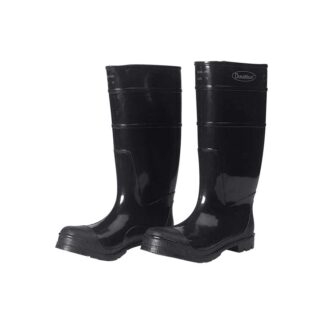 1550
1550DuraWear™
Plain Toe PVC Boots
-
 1500
1500DuraWear™
Plain Toe Rubber Boots
-
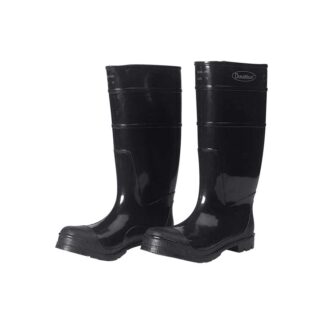 1551
1551DuraWear™
Steel Toe PVC Boots
-
 1501
1501DuraWear™
Steel Toe Rubber Boots
-
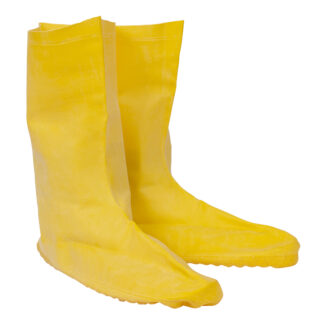 1522
1522DuraWear™
Yellow Disposable Latex Waterproof Nuke Boots
-
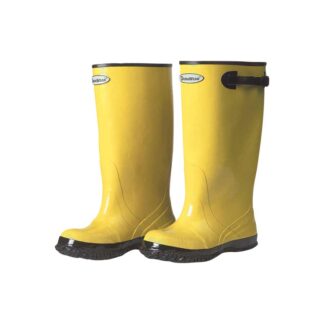 1510
1510DuraWear™
Yellow Rubber Slush Boots
FAQ
According to the National Safety Council, OSHA cites a handful of companies for violations of its foot protection standard each year, but about 200,000 workers suffer foot or toe injuries annually.
The type of injuries that are regularly cited include:
- Crushing from falling objects
- Crushing from rolling cylinders
- Punctures from sharp objects
- Burns or shocks from electrical hazards
- Burns from molten metal or hot surfaces
- Skin contact or burns from chemicals
- Slips and falls from wet or slippery surfaces
OSHA requirements state that workers must wear protective footwear when working in areas where there is a danger of falling or rolling objects or objects piercing the sole. Protective footwear also must meet ANSI Z41 or equivalent design requirements.
Durability and the strength of the boot come down to the material. Rubber provides a waterproof, easy-to-clean, high-grade material that is sturdy and easy to clean. PVC is lighter and more affordable plastic material but can be stiffer and less durable.
Waterproof footwear is often essential. It can also be hot on your feet. In some cases, a disposable overboot might be more appropriate. As the name suggests, they are worn over other footwear when working with hazardous materials and are made with a lighter latex material.
Toe Protection should be chosen carefully based on the task. Steel is heavier and thicker but often a slimmer profile is required. That’s when other non-metallic options including composite toe boots should be considered.
Look for industry-specific boots for specific protections like:
- Providing unique electrical conduction or insulation to prevent electric shock
- Protecting from caustic, reactive, toxic, or corrosive materials
- Creating slip-resistance when working on slippery surfaces
 |
 |
 |
| Providing unique electrical conduction or insulation to prevent electric shock | Protecting from caustic, reactive, toxic, or corrosive materials
|
Creating slip-resistance when working on slippery surfaces |
As with any footwear, the fit is critical. No matter the quality, a boot that doesn’t match your foot’s particular shape won’t work. Things to consider when looking for a boot are:
- Can you move your toes?
- Do your heels slip around?
- Is the lining comfortable?
- Do you feel the seams when you walk?
- Does the inside construction offer enough support?
- Try on with the socks – breathable, moisture-wicking socks are best.
- Try the left and right boots on at the same time.
- Try walking, bending, standing in place, and other work-like poses – check for comfort.
When testing the fit, check that:
- Your heel doesn’t come up or rub against the back
- Your toes should have room in front of them during movement
- You don’t feel pain or pressure in the sides
- Your toes shouldn’t slide around too much or hit the top of the boot
- Take your feet out of your boots to check for any red spots where the boot has been rubbing
OSHA’s PPE guide says care of protective footwear, as with all protective equipment, should include regular inspections before each use.
This includes looking for cracks or holes, separation of materials, broken buckles or laces. Check the soles for metal pieces or other like items that could be embedded and become an electrical or trip hazard.
Workers should always follow the manufacturer’s guidance on maintaining and cleaning foot protection.
Showing all 9 results
